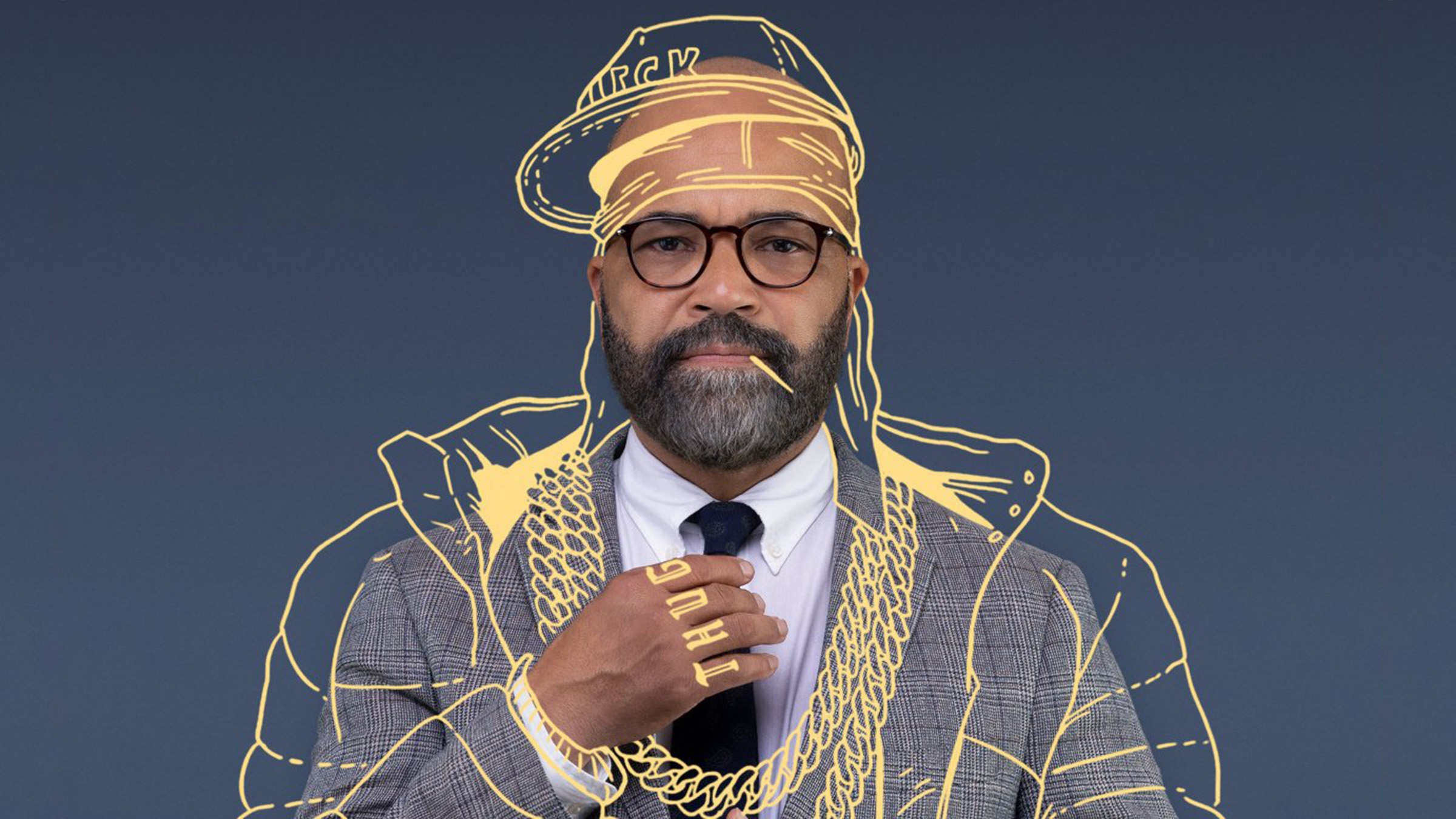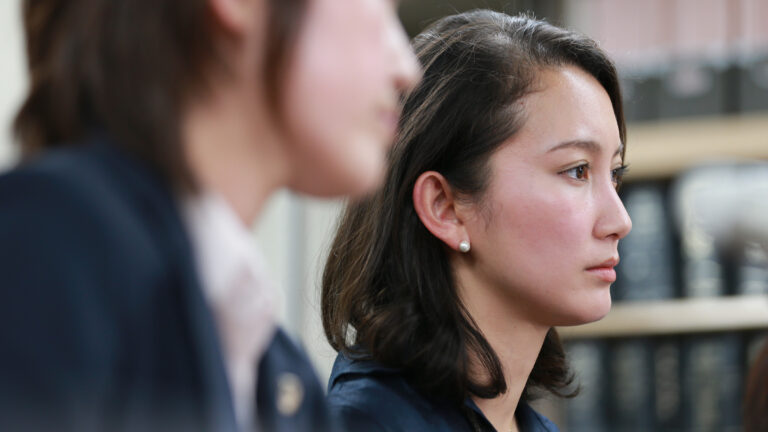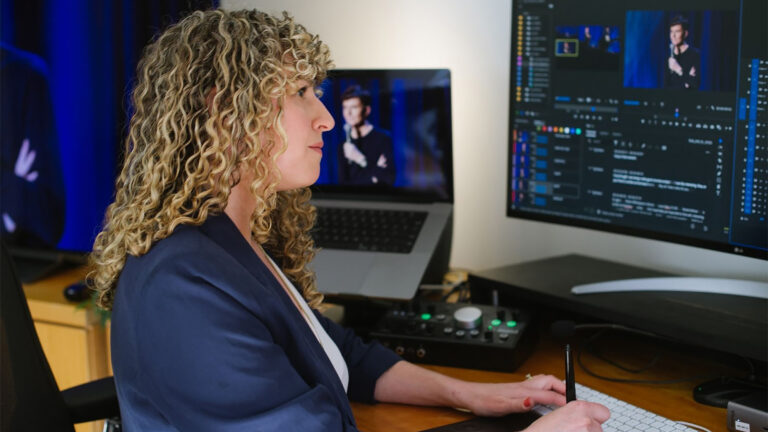When American Fiction editor Hilda Rasula, ACE first got the script from her agent, the director attached to it seemed more than a little familiar. It turns out that Cord Jefferson, Hilda’s casual acquaintance from the backyard barbecue circuit, would be helming his first feature. Together, the pair would create a movie that’s one-part social satire, one-part family dramedy, and wholly entertaining.
American Fiction plot summary
American Fiction follows frustrated novelist-professor, Thelonius “Monk” Ellison (Jeffrey Wright), who’s fed up with an establishment that profits from Black entertainment that relies on tired and offensive tropes. To prove his point, he uses a pen name to write an outlandish Black book of his own, a book that propels him to the heart of hypocrisy and the madness he claims to disdain.
In our discussion with American Fiction editor Hilda Rasula, we talk about:
- Trojan horse storytelling
- Staying away from the dark indigo-blue territory
- Hilda and the traveling rug
- How it’s tricky temping with jazz
- That first act…why is it always the first act
Listen while you read…
Editing American Fiction
Matt Feury: I want to start this interview a little differently than I usually do, so bear with me. First, I’d like to hear you describe the premise of the film.
Hilda Rasula, ACE: American Fiction is first and foremost about a writer who wants to tell stories. And because he’s a writer who is not getting published and is frustrated with the state of the book industry and its rejections of his writings, he does something kind of outrageous. What he does is a private joke to him, but it turns into a terrible, monstrous success. That’s only one layer of the film. At its heart, the film is a dramedy about a writer and his family.
MF: At one point, Monk Ellison, the protagonist played by Jeffrey Wright, says, “I don’t believe in race. The problem is that everybody else does.” With that quote in mind, what did director Cord Jefferson want to say with this movie?
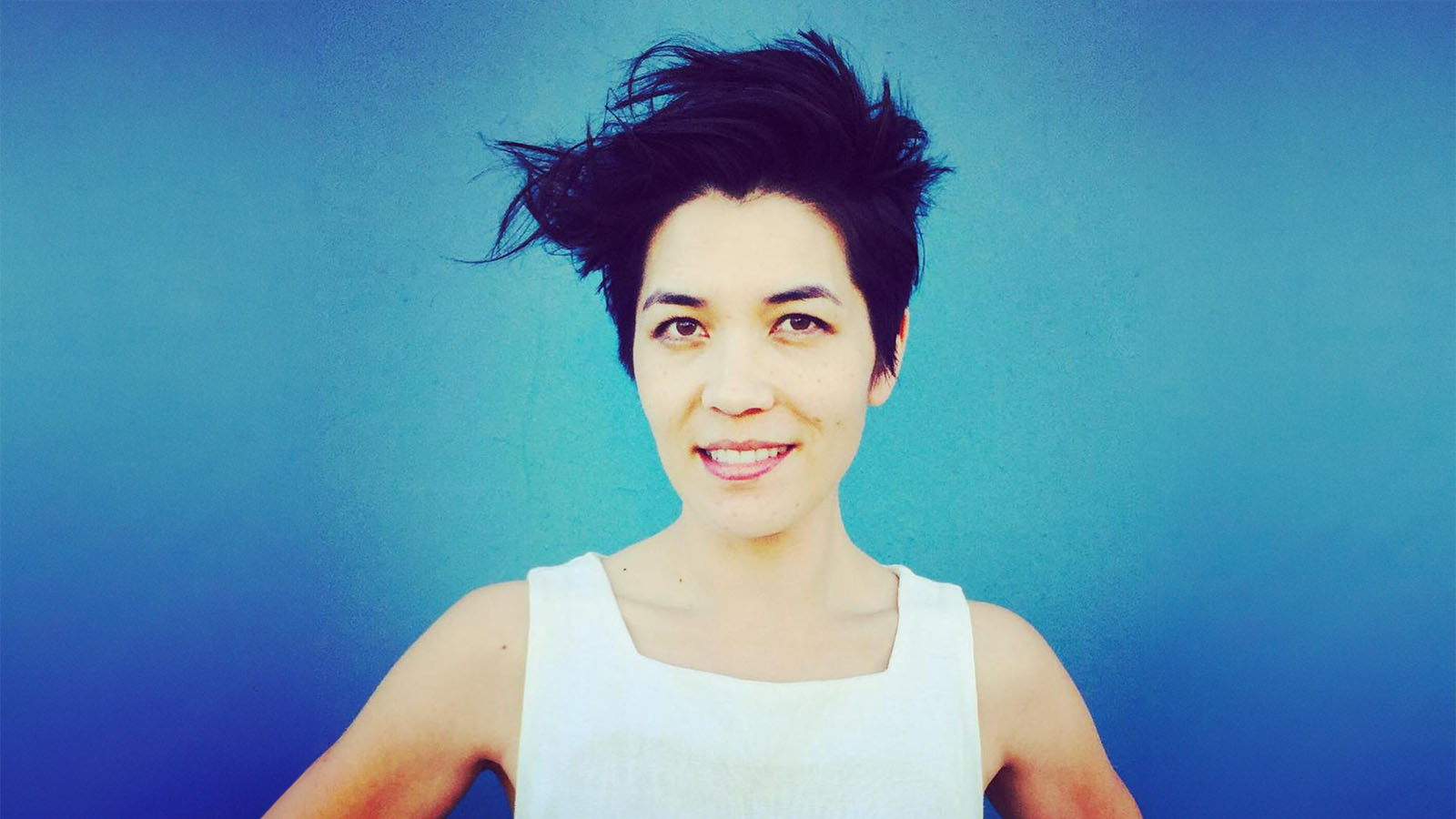

Hilda Rasula, ACE: On the surface, the logline of this movie is a cultural satire about identity politics and race. But I think that Cord Jefferson and all of us making the movie wanted to “Trojan-Horse-in” a different kind of story.
We wanted to tell a human story about a writer who is struggling to understand himself regardless of race. It is a story about the ways we all get pigeonholed in our jobs. We want to break free of the ways different people in our careers attempt to sand down our edges and make us conform to certain ideas of who they think we are. Ultimately, it’s a humanist story, or I hope it is. We wanted to tell a universal story about a man in the middle of a midlife crisis.
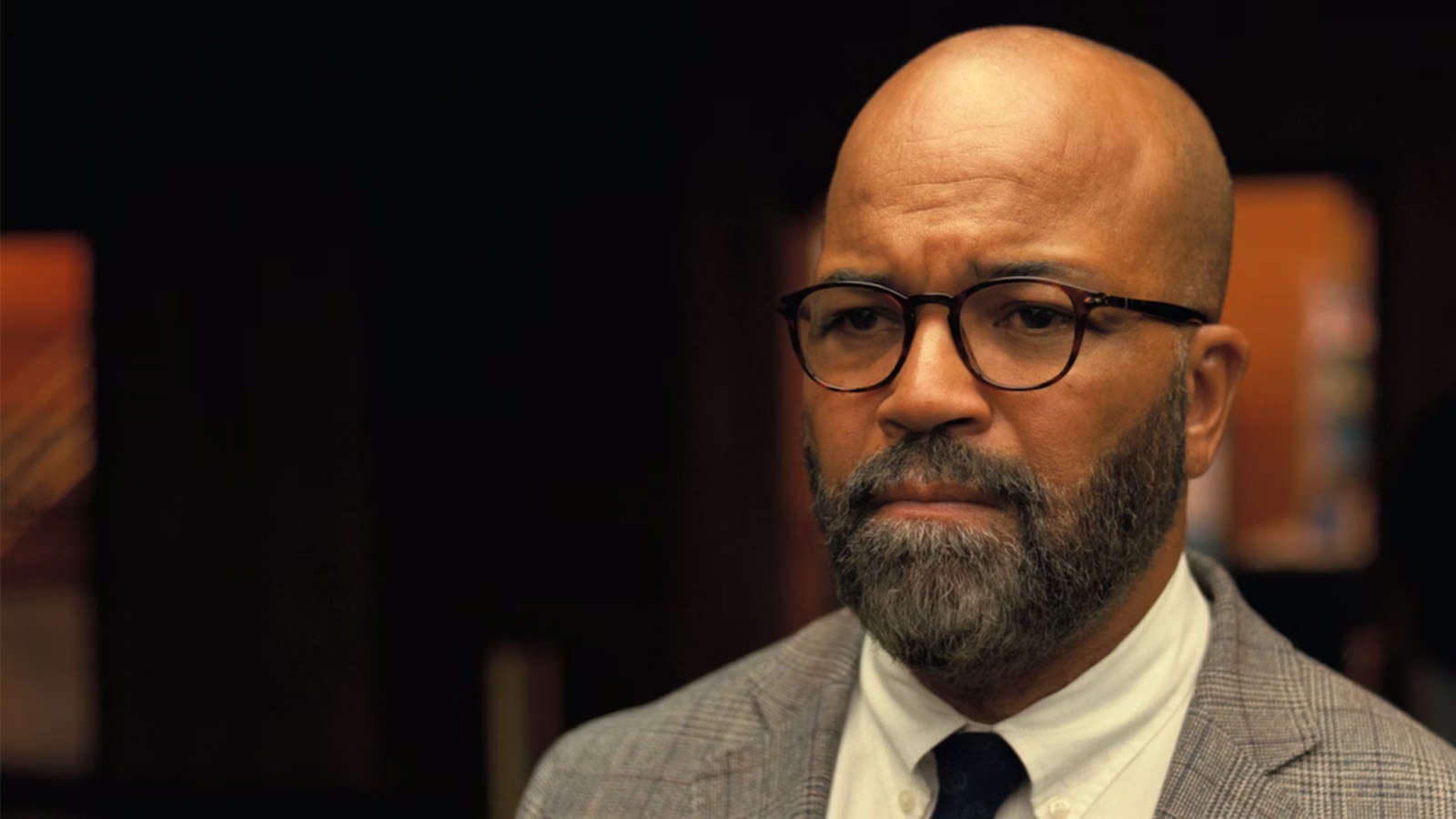
MF: The film is based on the novel Erasure. Did you read that or did Cord give you anything else for reference?
Hilda Rasula, ACE: No. I am at the point in my career where I have decided that I shouldn’t read the source material. Of course, if a director asked me to read a book before going into the editing process, I would do it for them. But I like to use the screenplay as the guide.
To me, the screenplay sets out the intentions of what a film wants to be far better than a novel, source material, stage play, or whatever it’s coming from. I think that I have to take the script, use that as the North Star, and follow it wherever it’s ultimately meant to go.

MF: What happened in your career that made you change your mind about reading the book versus sticking to the script?
Hilda Rasula, ACE: No, no, there’s no terrible skeletons in my closet. I’m just finally at an age, I won’t say which age, where I trust my instincts more and more. My instinct is to use the screenplay as a guiding light. From there, I use every tool at my disposal to edit, especially how I react to the footage. I’m starting to gain more confidence in my mid-career self. I’m trusting my instincts more.
My instinct is to use the screenplay as a guiding light.
MF: I’m glad you use the word confidence. We’re going to return to that in a second. The premise of American Fiction is established in the first three scenes. It takes about five minutes. It goes by very fast. Tell me about how you worked or reworked out that opening.
Hilda Rasula, ACE: It was a question of reworking. The first scene was always the opening scene of the movie. It’s kind of a polemical scene. But scene two used to be different. It was a slow conversation that didn’t have any conflict in it, and that was not the right way for a movie to start.
We needed something else and we knew that for a long time. Scene two had a target on its back right from the beginning. But we shoved it to the side for a while knowing that we were going to change it. Cord went back and wrote a great scene that put Monk in a state of real crisis where he had to leave town.
Monk is in trouble. His job as a university teacher is threatened because of his behavior and the problematic ways of the world. We knew that we needed to get him to where he had no choice but to go back to Boston to confront everything going on in his family. Monk’s character wasn’t just on that path at the beginning, so we had to fix that right from the start.

MF: You just explained what the premise was. Things aren’t working out for Monk. He has to return to Boston. He goes to a reading of another author and thinks, “People love what I consider to be selling out or pandering.”
Then, we meet his family and the film slows down a little. We get to know Monk’s family. I have to admit while watching I was thinking, “Let’s go. We’ve got a conflict.” But you don’t do that. You took the time to give Monk’s character real motivation.
Hilda Rasula, ACE: Yes, the film does something quietly subversive on a structural level and maybe even on a cultural level. It becomes a family dramedy about black characters going through incredibly universal things. But it’s not a period piece and it’s not a “larger issues” movie. That is really what this film is trying to do.
So, of course, we have to take the time. The whole point is for the audience to understand Monk and his family and his incredibly complicated sibling dynamics. I think his whole situation is relatable. He has a whole situation with his mom being an aging parent and getting worse. I think that is a really common issue that a lot of people are going through right now.
American Fiction deals with these universal issues that real people are dealing with. If you don’t slow the film down at least a little bit to shade in the supporting characters, those issues don’t mean as much. Those issues are motivating Monk to make money and that’s integral to making the satirical plot continue. His character needs those motivations and it all just does work better if it’s earned organically.
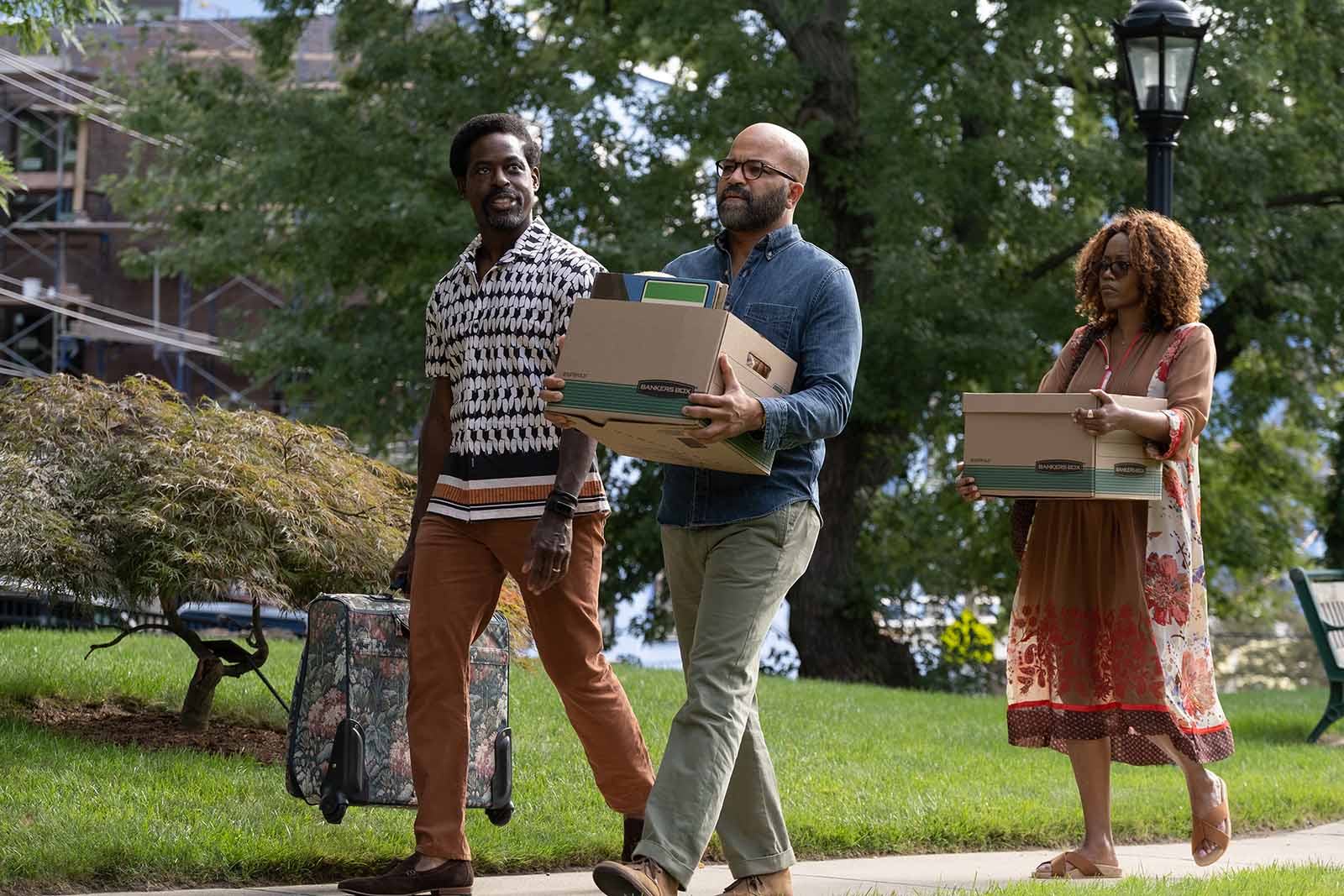
MF: Watching the trailer, you might think American Fiction is going to be a big laugh-riot comedy. But it has a lot of poignant moments and great family dynamics to explore. How do you balance the comedy and the drama so that the movie lands in the right tone? Did you ever feel like it might be leaning too far one way or the other?
Hilda Rasula, ACE: There were a zillion times when it felt like it might be leaning too far in one direction or the other. Ultimately, the blood, sweat, and tears of editing this movie were finding the right tone. We did a lot of pacing experiments to find that balance.
Ultimately, the blood, sweat, and tears of editing this movie were finding the right tone.
For instance, in the comedy scenes, we had a lot of discussions to make sure that it never became pure farce. A lot of absurd things happen, and it’s meant to be funny, but we could have gone bigger and we chose not to. There were a lot of moments where we chose to pull back. We wanted big comedy scenes, but we would pull back just enough so they weren’t outrageous farces that would never happen in the real world.
We also worked hard to lighten the dramatic scenes. When the color palette of some of those scenes was getting into really blue, dark indigo territory, we lightened it up a little bit.
Those little edges of comedy that Cord finds in his writing were always there. There would be a dark scene or a sad scene and then something funny would unexpectedly come out of a character’s mouth. That’s Cord. But we had to work to shape and pace those scenes so that they didn’t dip into a valley that was impossible to get out of.
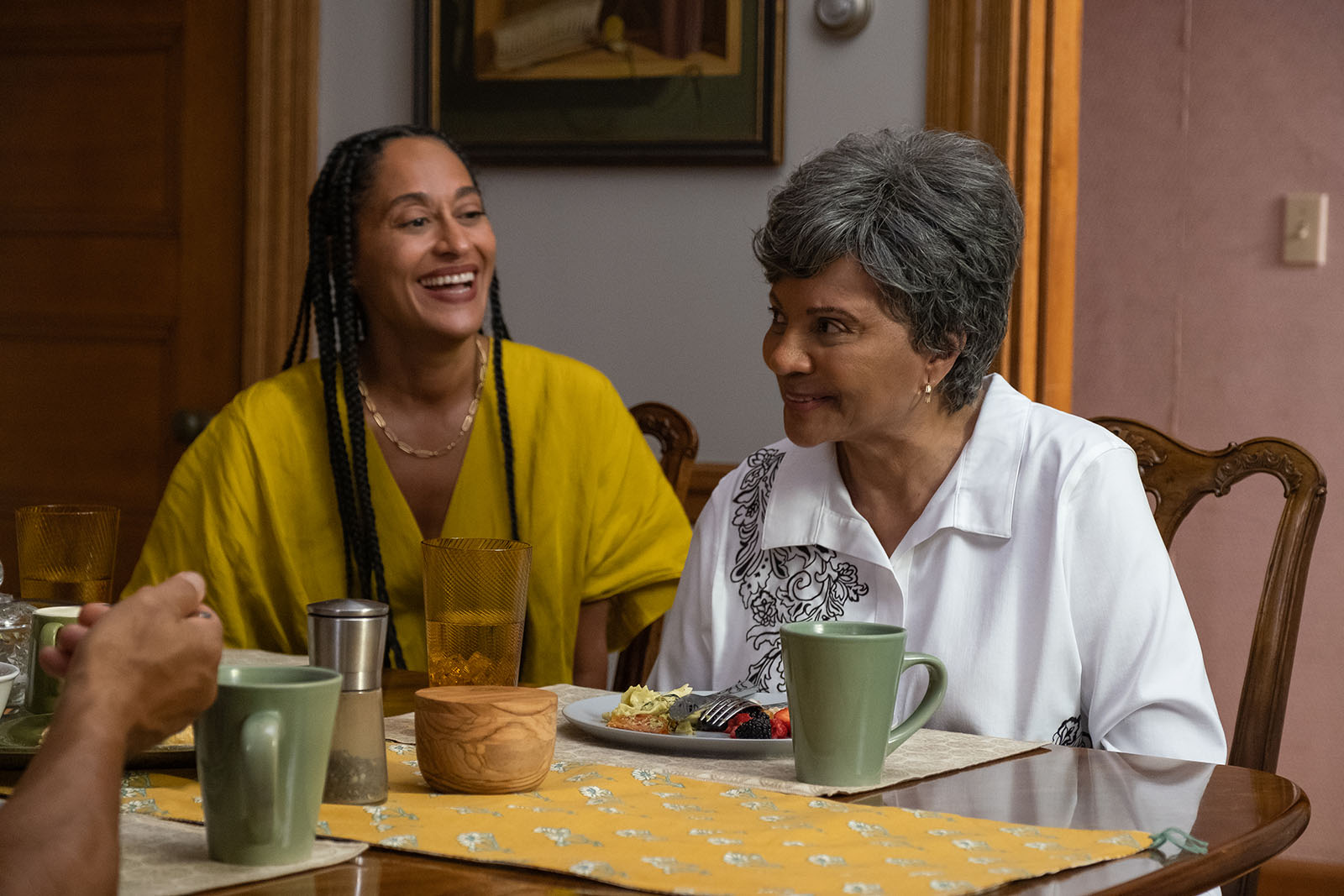
MF: Tell me about how you’re connected to Cord. What was the interview process for American Fiction? What did you two talk about?
Hilda Rasula, ACE: This job came to me in a very traditional way. My agent called me and said, “I’ve got a great script.” She didn’t even mention Cord’s name. She just said, “It’s a good script. I’m going to send it to you.” When it landed in my inbox, I thought, “Oh my God. Cord Jefferson. I know Cord.” We already knew each other socially. Not well, but we have a good friend in common who, strangely enough, used to be his editor at a magazine back when he was a journalist.
Cord has lived many lives. He was a journalist for quite a while and we have this very dear friend in common. So, I had seen him at barbecues, at our friend’s house, that sort of thing. We weren’t close at all. We barely knew each other.
We connected over the universality in the script. I loved how warm and human it was. I also really loved the balance in his writing. He loves the funny, but he also really loves the melancholy. Cord loves exploring those sad, vicious little moments. I love that, too. I love a movie that has heart, but also teeth. I have cut dark comedies in the past, so this movie felt like a natural fit for me.
MF: You’ve been doing features off and on for about ten years, films like Vengeance and Moving On. But this is Cord’s directorial debut. What is it like working with a director who was not only a first-time director, but also a director who is the screenwriter?
Cord loves exploring those sad, vicious little moments.
Hilda Rasula, ACE: We were given a lot of gifts going into this movie. We had a really solid script. That was a great foundation. We also had Cord’s experience as a television writer. He is an experienced and gifted television writer. That was great because, although he was not used to being in the director’s chair, he was used to taking notes.
Years of writing on television shows and being in writers’ rooms meant that he was very collaborative and he understood the idea that we were making this for an audience. This was not some pet project for himself. We were making this film to share with the world, and he wanted to share the story with the world. So, we always operated from a kind of really open-minded standpoint.
Cord was also humble and good about letting me do my thing. Not every first-time director is like that. Cord respected what I needed to do on a nuts-and-bolts level. He wasn’t tied to any particular angle or sequence. He didn’t have any of that in the room. He was all about feeling the story that he wanted to make. He trusted me. He openly and generously trusted me to find what every scene needed, whether that meant tweaking a fussy performance or making the necessary cuts that happen when you don’t have a ton of angles.
MF: The movie was shot on location in the Boston area. Were you cutting on location during production and how long did production run for?
Hilda Rasula, ACE: I was in L.A. and they were in Boston. Production ran for four or five weeks, so it was a cool twenty-five days, which was great. But they did squeeze in a lot of locations during that time and a lot of location shooting. I heard it was pretty intense over there in Boston. Just a lot to do every day. A lot of pages to get done. Luckily, I was kept far from the fray. I would just sit in North Hollywood cutting away.

MF: How do you like to have your cutting room set up?
Hilda Rasula, ACE: I am known for the rug. I have this rug that I travel with from office to office, and it’s always the same colorful rug. It’s this vintage rug from Afghanistan. I carry it around from place to place, and it makes me feel at home. I also bring in special pillows for my couch. That sets the stage, I think, for creating a feeling when the director walks in the room that they’re at home.
The cutting room may be a workplace, but there’s a certain domesticity to it as well. It’s a place where people are going to share confidence. This is a place where a director can be comfortable. If they need to take a nap, if they need to talk about their mom while lying down on the couch, which some directors do, they can do it there.
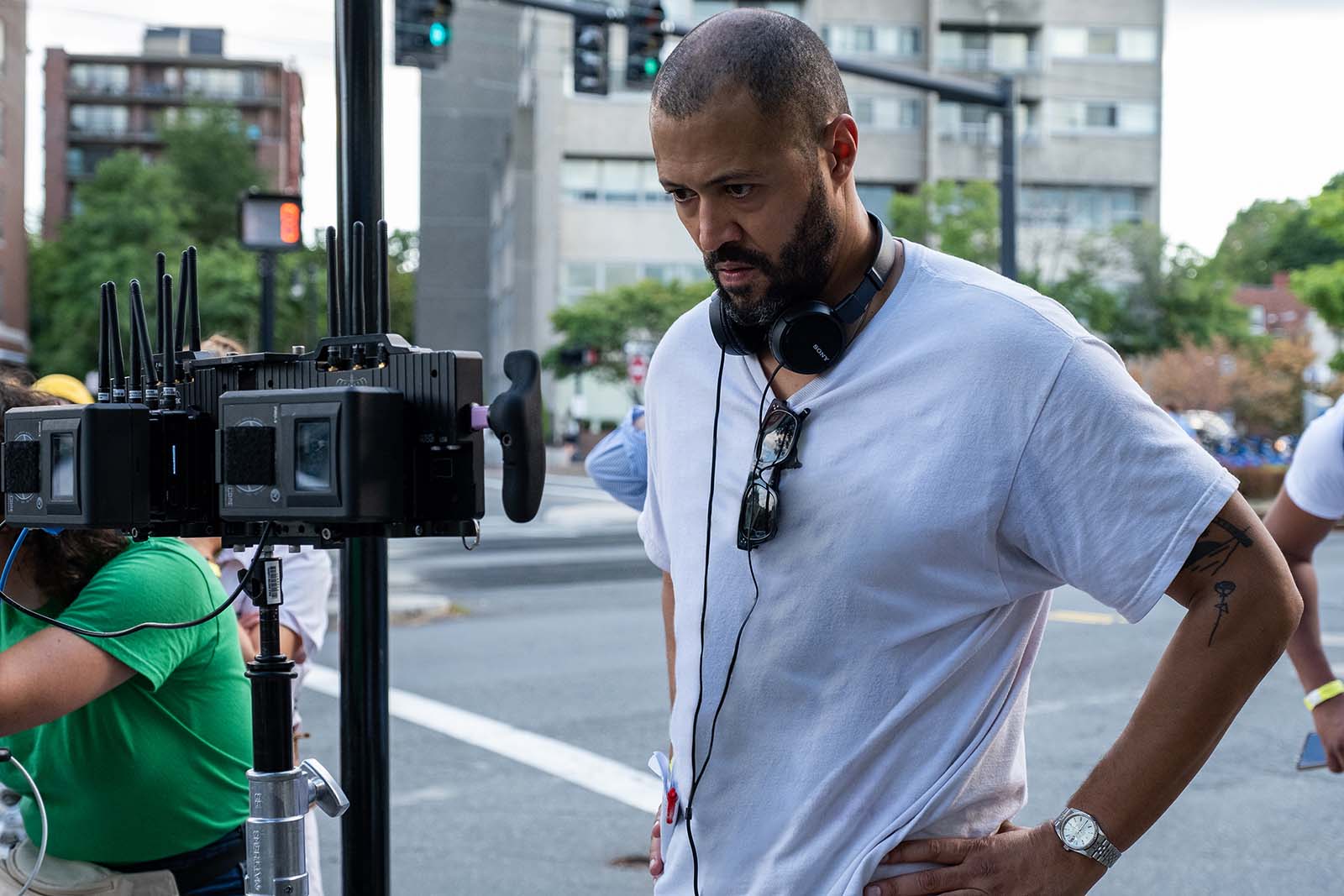
You have to set the stage for making them feel comfortable. Ultimately, there’s a lot of emotional and psychological work that takes place when you’re cutting a movie. The room setup is the beginning of that.
Everything in my Avid is a separate thing. I like a pretty basic setup. I love Avid for what it can do. When you’ve been working with Avid for a long time, your hands can almost do things before you think. So, that’s a different thing. I don’t have any crazy bells and whistles there. But it is important for me to have a warm, welcoming environment.
MF: What was the dailies process? How did that work?
Hilda Rasula, ACE: There was a little delay because they were on the East Coast. They would take the dailies, send them to a lab, and then they would get sent to us through Aspera. We were always cutting a further six hours out from the way we would have if they were in Los Angeles. I was always about a half-day behind.
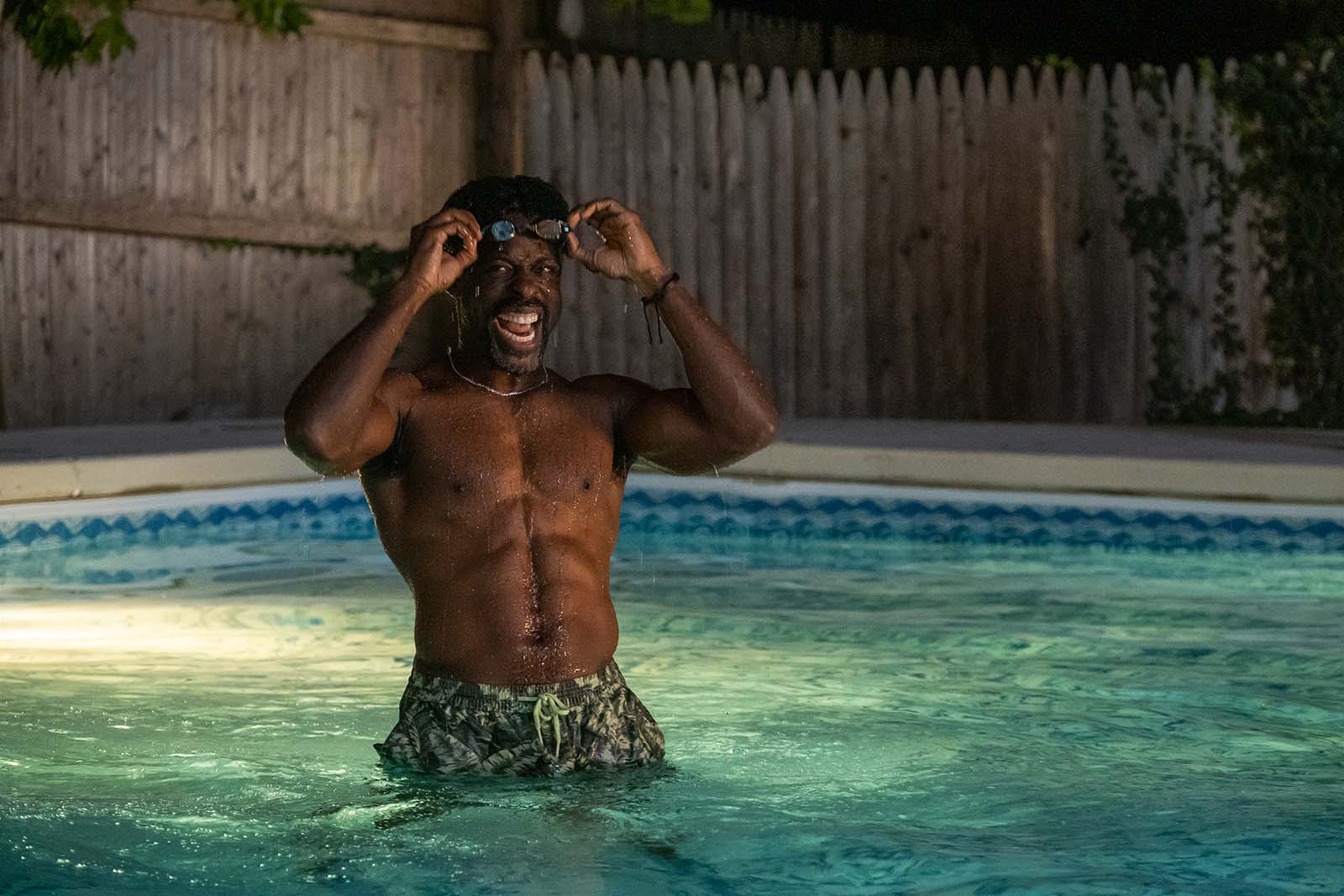
MF: When you say send them to the lab, are we talking about the traditional process? Was this movie shot on film or are we talking digital?
Hilda Rasula, ACE: This movie was shot digitally. We didn’t have the money to shoot on film.
MF: What did they shoot on and how many cameras were used?
Hilda Rasula, ACE: They shot mostly on a single camera. It was an old-school movie in a lot of ways. Unfortunately, we did not have the budget to have two cameras running every single day. There were a couple of occasions where we needed a few cameras. There were a couple of big scenes where we needed three cameras and we brought them in just for that. But it was a lot of single-camera shooting.
In a sense, it was also a very traditional edit. Sometimes I think, “Wow, this is a movie that in some ways could have been made years and years ago.” I think of it as being slightly classical in that way. No crazy VFX. There’s hidden VFX because we live in the modern world and you use the tools at your disposal. But apart from those, it’s a very traditional movie.
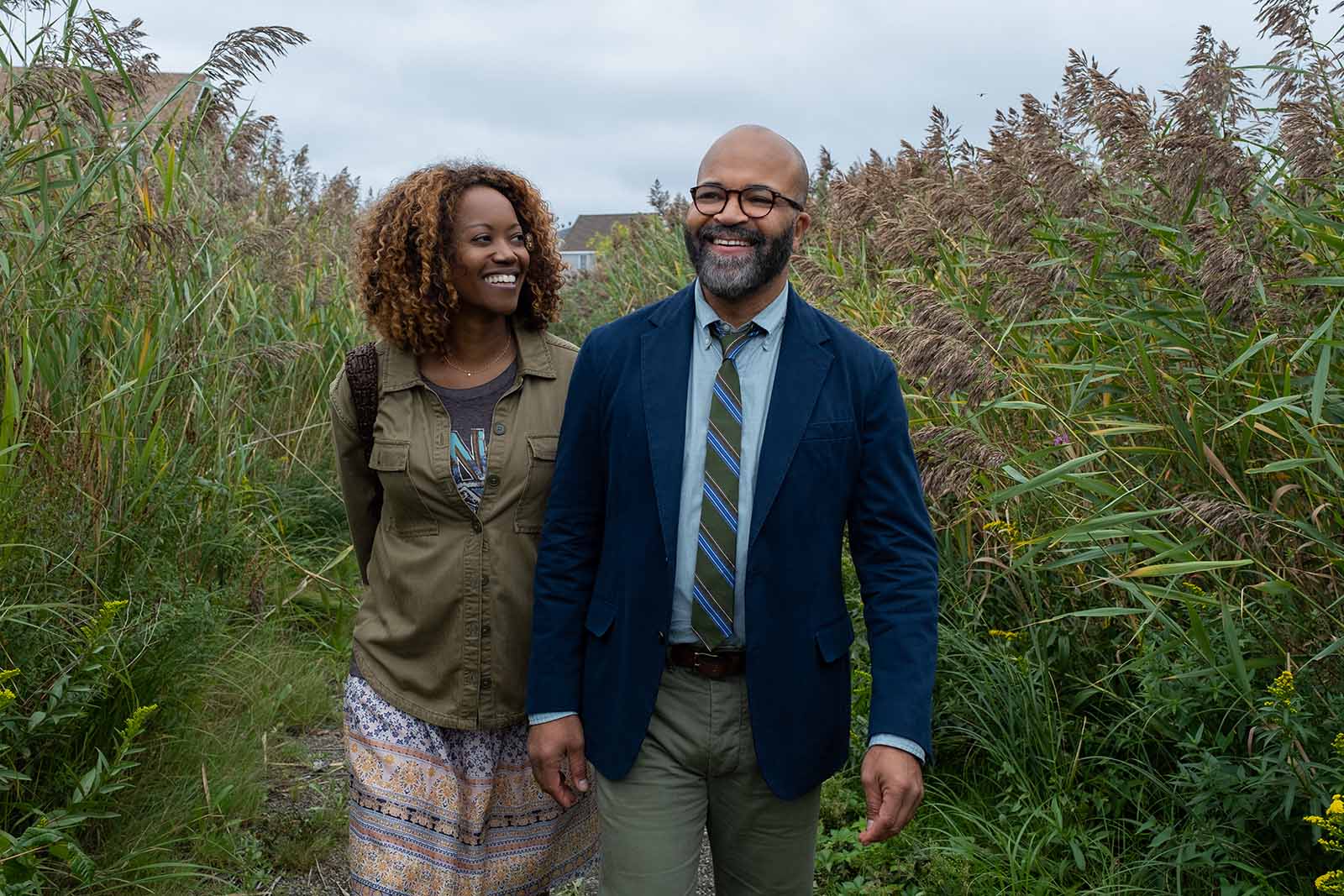
MF: What tools did you use for this non-VFX VFX?
Hilda Rasula, ACE: It’s just me being fussy about performance and timing, that sort of thing. I’ll use split screens to manipulate the timing of performances between two different characters. I’ll do invisible speeding up and slowing down to hold a look for longer. Those things sound very basic but they mean a lot when you’re polishing the timing of a dialog scene.
A dialog scene can seem very simple but in some ways, I think it’s the hardest thing to cut. I’m always trying to get the vibe right between two characters. I’m also always trying to build a scene so that it matches the feeling that I first had when I read it on the page.
MF: On a smaller film, do you find that you have to take on more responsibilities as an editor than you might on a larger film?
Hilda Rasula, ACE: I find that I have to be more responsible for the music. On television shows, there’s usually a music supervisor. There’s a whole department you can go to and work with.
It wasn’t that way on this movie. We didn’t hire our composer until later in the game and we didn’t have the budget for a lot of music. There are almost no needle drops in this movie. We were temping with jazz, which is tricky to temp with. So, I needed to take on more responsibilities in terms of almost being a music supervisor and a music editor right from the start.
But I love working with music. That’s also where the creative control freak side of me comes out. It’s so fun to play with music. It’s fun to have that kind of control, even though it’s just a temp score. It’s fun to hear something while you’re driving in your car and think, “Oh my God, what an amazing intro to this song. I love it. I can already picture it playing at the end of that scene.” You get inspired by things. It is fun to have that freedom.
MF: Do you typically cut with music that’s inspiring you? Or do you like to cut the scene first and then go back and try the music?
Hilda Rasula, ACE: I always first cut the scenes dry. If there’s something that’s incredibly music-dependent, that’s in a particularly rhythmic way, then I will cut with music. I’ll cut a montage with music or something that’s music-driven. Sometimes, I will try to find music first, but generally speaking, no, I cut everything dry knowing that it’s going to need music.
But music plays tricks on you. Music can make you cut things too long. I think that it’s better if you try it dry. Then, when I’m building and assembling something longer, I’ll try to feel the spots where it’s crying out for music. I’ll feel like, “Music must go here. This transition just doesn’t work without it.”
Music plays tricks on you. Music can make you cut things too long.
MF: The final runtime for American Fiction is, what is these days, a brisk two hours. What was the length of your first assembly?
Hilda Rasula, ACE: I think the first assembly was two hours and twenty-eight minutes. It was almost two and a half hours.
MF: That’s pretty tight.
Hilda Rasula, ACE: It’s not bad, especially for comedy. I try to pace as I go, which is a little bit more laborious, I will admit, in dailies. Not everybody does this, and there’s no one right way to cut dailies, but I try to pace as I go.
If I cut a scene too loose right at the beginning, it can feel like it’s not working even though it’s truly a good scene. So, I try to do that as I’m cutting in little ways without cutting lines. That comes later. But I try to find a good rhythm right from the get-go.
We did end up cutting a lot of stuff out. I think we cut eleven scenes out of this movie, which was quite a lot for a movie like this. We also paced up scenes.
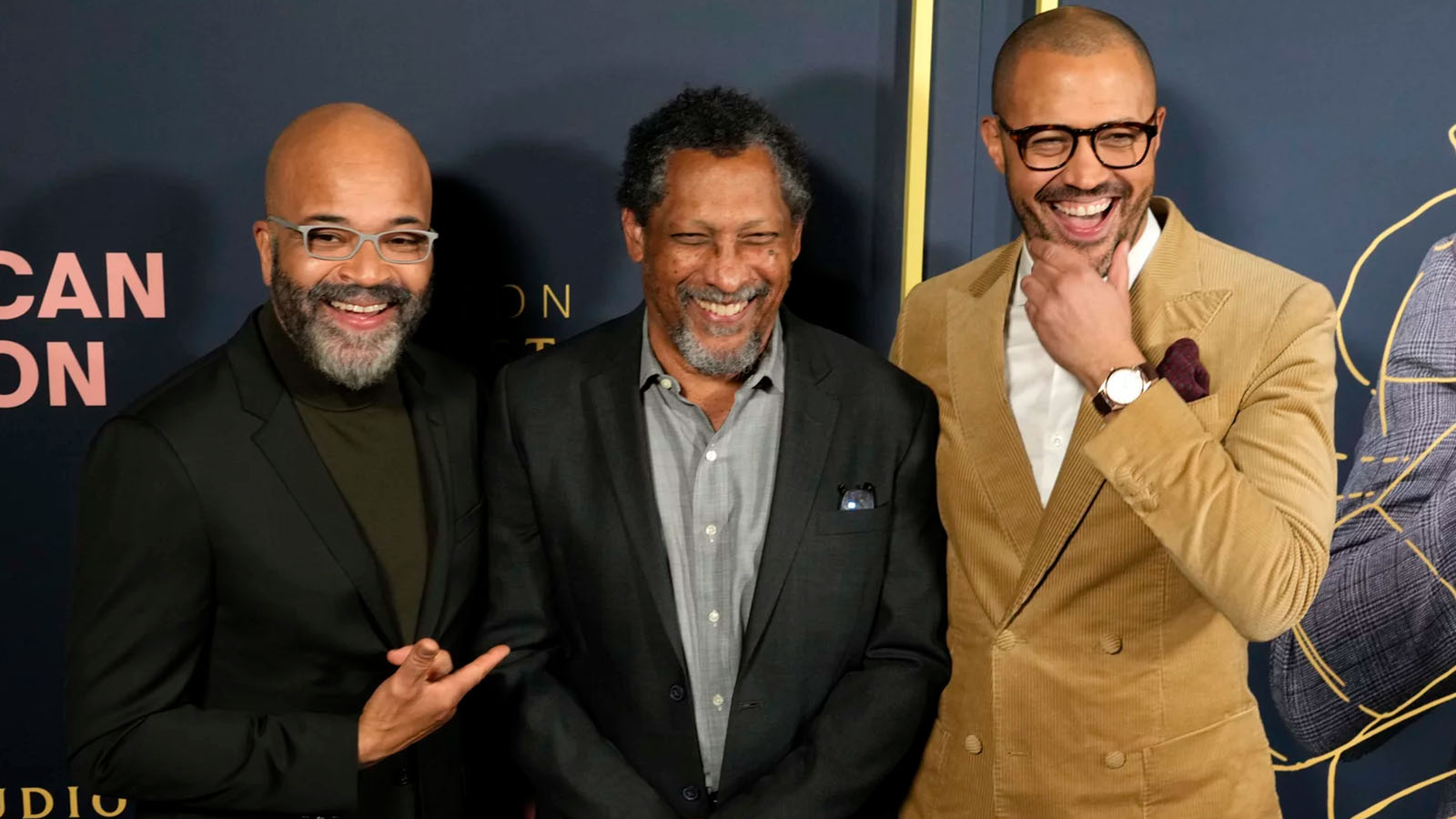
MF: Going back to director Cord Jefferson, did he give you a lot of coverage or a lot of alternate takes to work with?
Hilda Rasula, ACE: Not really, but that’s not Cord’s fault. We had a tight shooting schedule where we were racing around to so many locations, trying to cover so many pages a day. There was not an option to get a ton of coverage.
There were a few specific scenes where they had planned to take more time, like the endings. That took a certain amount of planning and we knew we needed very specific elements for that. There were some days like that, but most of the time there was no time to get major coverage. We had to make it work. It was about finding good performances and finding the right mood and vibe of the scene. Once they had nailed that, they would move on.
MF: People listening closely might have heard you use the word “endings” with an S. This movie kind of has two different endings. How did you arrive at those?
Hilda Rasula, ACE: It was a process to figure out what the endings needed to be. Endings and beginnings are tough. We knew right from day one with Cord that we were going to have to figure out the beginning. And we also knew there were some question marks about the end.
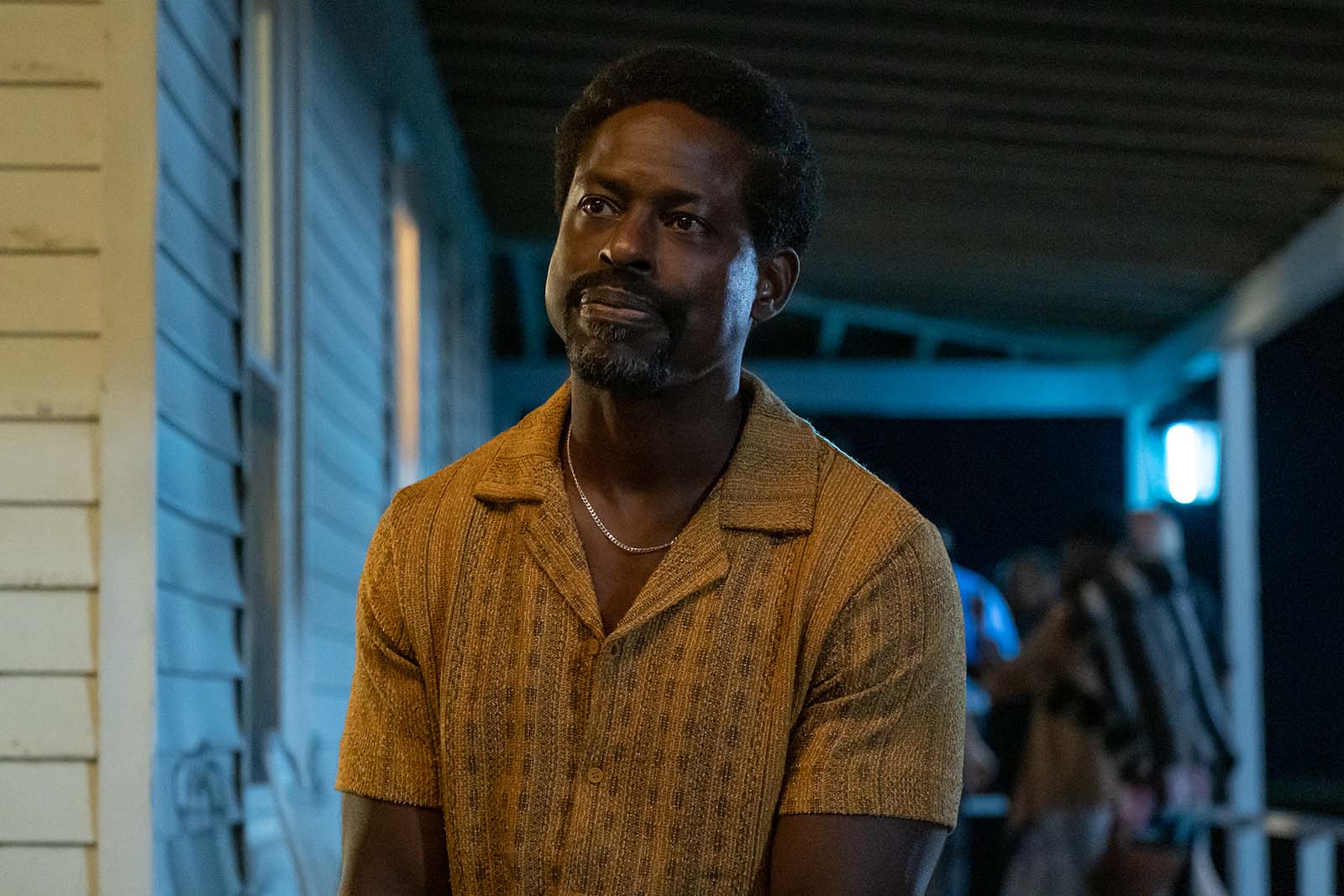
Our original ending worked for a long time. But when we started showing it at friends and family screenings, we realized that about twenty percent of people didn’t like the ending. The movie originally ended on a very cheeky note, one that lived in that satirical storyline.
We had a zillion discussions about, “What does the ending need to be?” Ultimately, Cord believed that the film was a human story. It was a dramedy about a writer discovering his voice and who he wanted to be. That was the direction, so that was the note that the film needed to end on. It couldn’t end with a joke, which is what the original ending was. It was a very funny joke, but we decided that our ending needed to be a little more meaningful.

MF: What else did you hear from test audiences? What did they think you should change?
Hilda Rasula, ACE: Luckily, people were fairly positive right from the first friends and family screening. We always had at least one or two people who said, “This movie says things that I have been privately thinking about for years.” It was great to have that little bit of positive feedback.
The larger feedback that we got was about pace. Finding the balance between Monk’s family storyline versus his professional storyline was a delicate operation. It took us months to figure out. We played around with how long certain scenes were, how late we could get into them, and how fast we could get out. At certain moments, I think we were on the verge of losing the audience.
This movie says things that I have been privately thinking about for years.
We also had an Act One problem. So many movies run into that problem. It’s a thing. We used to go to the family storyline even earlier. We spent several scenes with Monk’s family before he goes and sees Sintara Golden (played by Issa Rae). That was the way it was originally scripted.
We eventually realized that it wasn’t what it needed to be. It took me an embarrassingly long time to truly figure it out. I think we were eight months into cutting before I thought, “This is what we need to do. Cord, go away! Leave me alone.”
He left me alone for a day and I played around with reordering how we met Monk. I realized that we wanted to learn a little more about his professional life and the systems that he was fighting against. We needed to learn about the structures that he finds so oppressive before meeting his family and getting to know a different side of him.
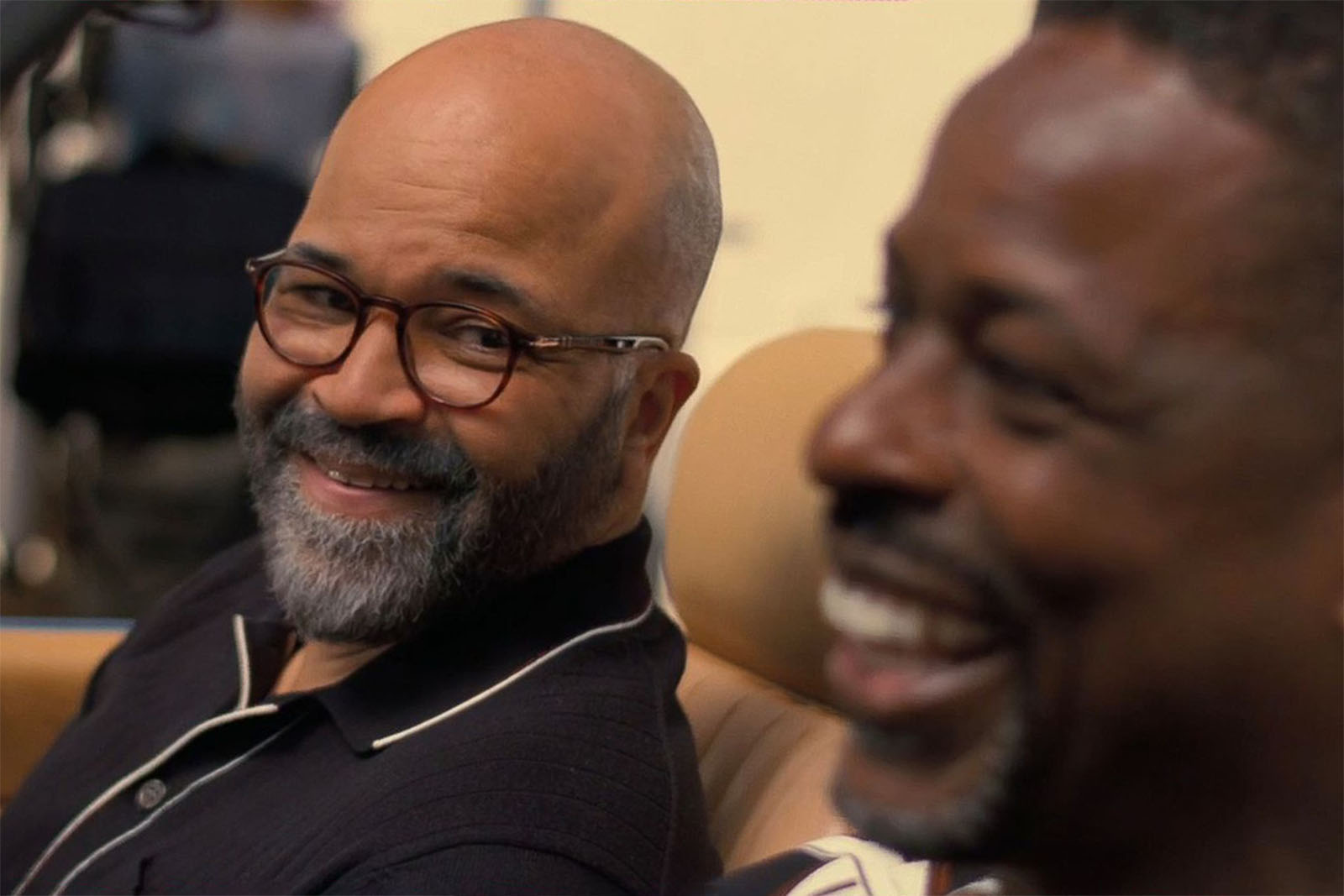
The problem was that those scenes with Issa Rae were tied to other scenes in a way that made it seem impossible to move them around. To do it, we did have to cut a couple of other scenes. The timeline didn’t work, so we had to sacrifice some scenes that we really loved. But that resulted in what I think was a far greater gain, which was learning about Monk in the right order.
MF: You said that revelation came eight months into the cutting process. How long was post-production?
Hilda Rasula, ACE: Ten months.
MF: Tell me about your crew and what you look for in a good assistant.
Hilda Rasula, ACE: I was working with Charmaine Cavan, who is amazing. My good friend Cate Haight told me about Charm, and she was wonderful. She was there with me from the beginning. I think it was a good opportunity for her as well. She wanted to prove how great she could be and how brilliant she was. That just naturally came out in working together. She was proficient, nice, and cool in all the ways that I think an assistant needs to be.
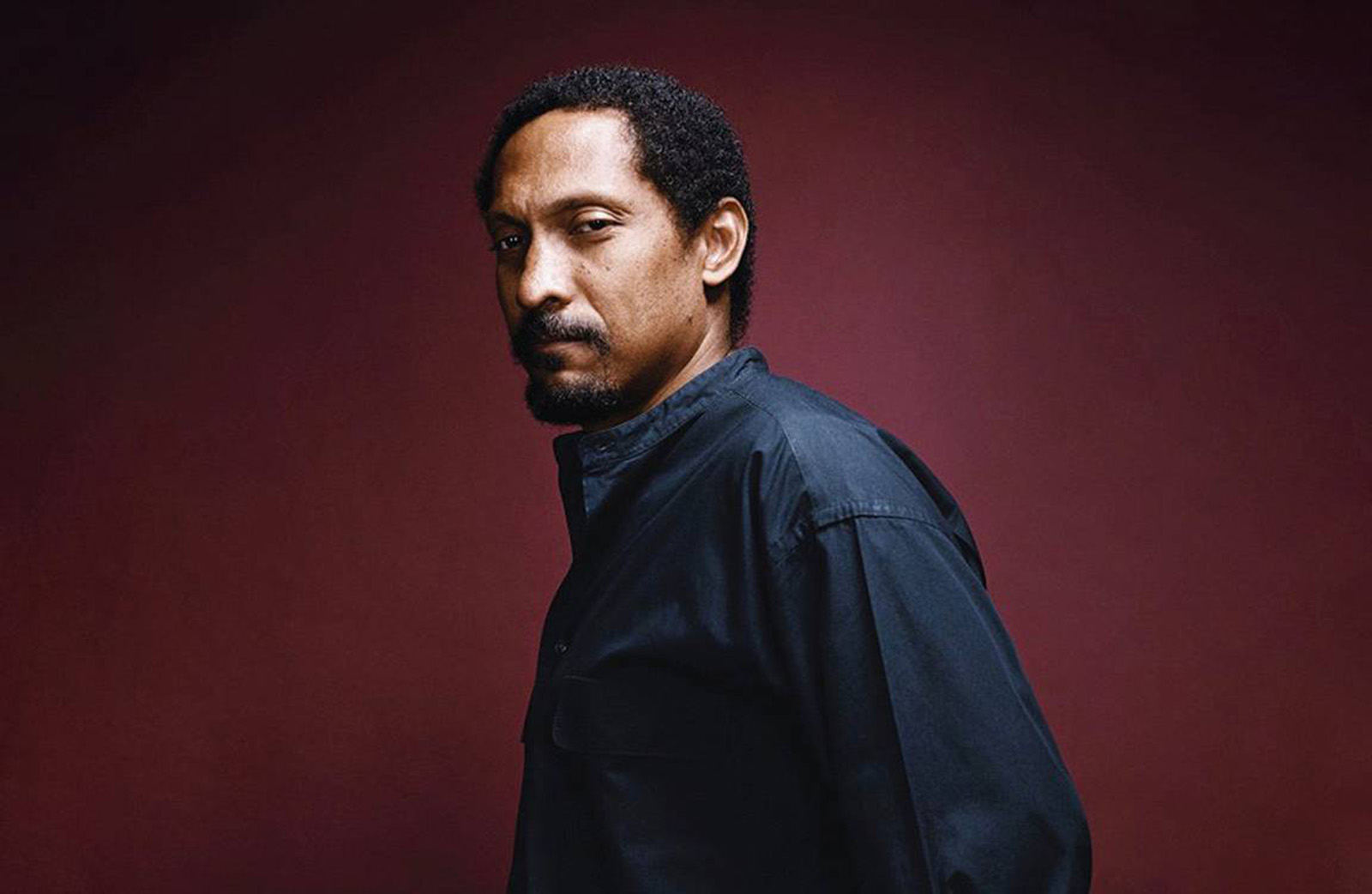
One of the things I love about a great assistant is the ability to sit back and talk with each other about the film or view things together. Sometimes we would take time on a Friday afternoon to look at a chunk of the film and discuss it. Charm had these great revelations and reactions that helped me understand Monk even further. It helped me understand what the audience would be going through too. It’s important to have these revelations when you’re still building the thing, before putting it in front of a real audience.
What I look for in a good assistant is somebody who cares about movies and cares about character and story more than anything else. The more technical aspects of the job are given. You have to have those, but so many people have those. It’s the other stuff that’s special.
MF: We’ve talked a lot about the trouble with Act One and figuring out those endings. What was the most challenging aspect of working on this project for you?
Hilda Rasula, ACE: The most challenging thing was probably nailing the tone. We had a very clear sense of the kind of movie that we were setting out to make right from the beginning. But at these friends and family screenings, my producer Ben LeClair would ask the room, “What’s a comp for this movie? Is there another movie that this movie reminds you of?” and it was just crickets.
Sometimes, people would say, “Maybe there’s a little bit of this movie and I guess a dash of that one” but they could never name a specific film. We had a clear idea of what movie we wanted to make, but we also felt like we had to carve out a path that would let us swing between the comedy and the drama.
We had to carve out a path that would let us swing between the comedy and the drama.
We had to ask ourselves some hard questions. “How are we going to mix absurdity and utter realism and somehow make it feel organic? How can we make these different vibes live in the real world and also make it feel universal?” Finding the tone was a tricky thing. We needed all the time we had to get there.
MF: My favorite scene was when Monk is asked how it feels to be back in Boston, reluctantly. And he says “Great. I already had some guy in a Bruins jersey ask if I thought I was better than him.” That is a great line and perfectly sums up the Boston experience. What was your favorite scene?
Hilda Rasula, ACE: The scene when Monk is writing the sick joke of a novel that becomes this Frankenstein monster. That scene was very special. I think it’s really hard to make writing scenes cinematic. It’s just not easy to do.
Of course, we could have approached it differently. We could have just cut to the book scene. But Cord did something different. He played in this weird in-between zone that had a touch of magic realism. He broke the walls of what was real just enough to let the audience know that it was fiction. He hints at the concepts of fiction-making that come later in the story. Bringing these characters to life with him was a special, weird, interesting thing. And the actors were so great. I had so much fun cutting that.
MF: They were great. We’ve already established your affinity for rugs and I guess for interior decorating, but as we wrap this up, and I underline the word wrap, what gift would you like most to receive this holiday season?
Hilda Rasula, ACE: I think what I want is the gift of a warm reception for this movie. I hope that people can receive this movie into their hearts with the same spirit that we had in making it, which was the desire to create something human. It is not an outrageous, big-scale film, but it’s human and real.
I hope that it somehow comes across that way and touches people in the same way. This one was special and it got into everyone’s hearts. I hope that the world can receive it in that way.
MF: Well, you were already going to get that. So how about maybe some drapes to match the rug or something, right?
Hilda Rasula, ACE: Yes, a nice candle. What I want, honestly, is a bigger cutting room for my next project. The only thing that was not ideal about the rug and the cozy couch was that we were in a pretty tight space on this one. Next time, I want a little more breathing room.
MF: That sounds good. I’ll see what I’ve got around here and get it to you.

